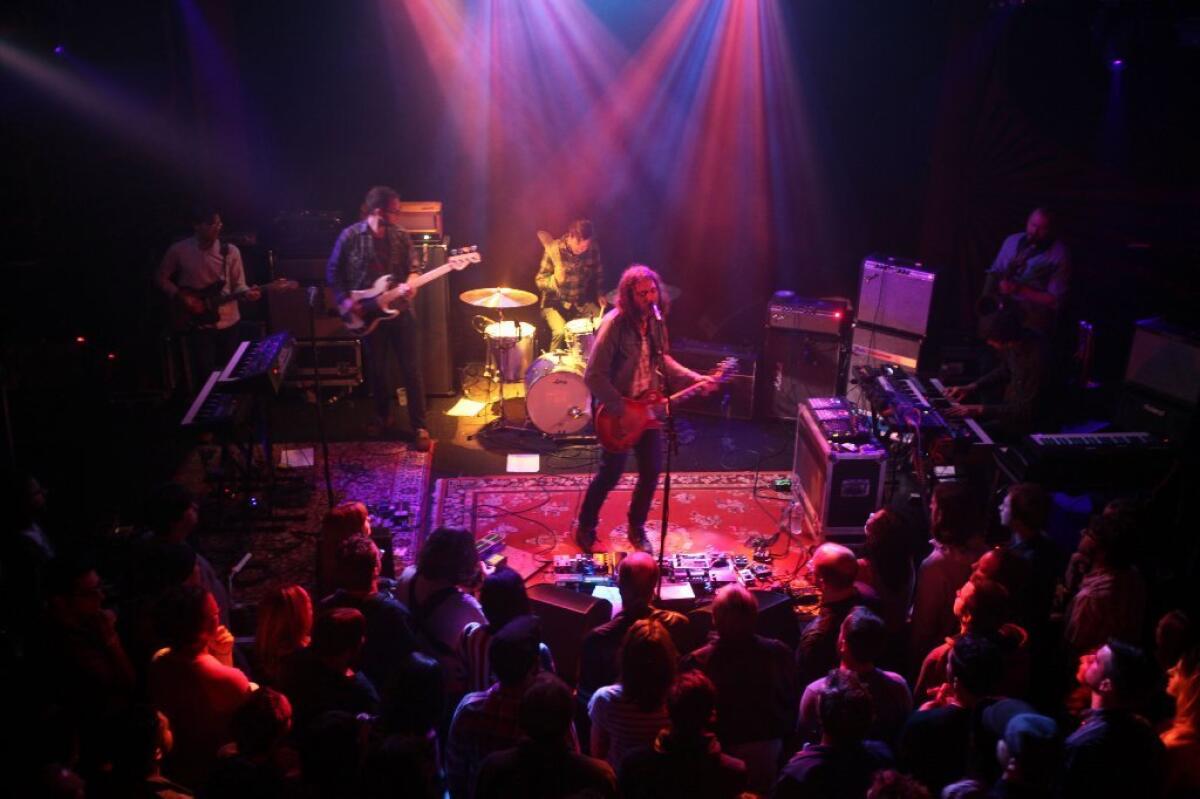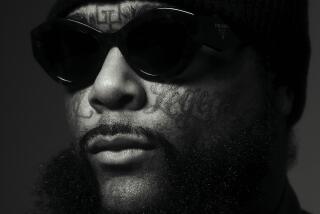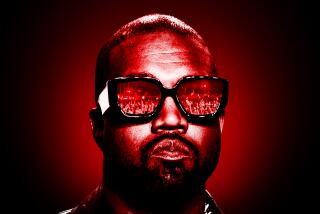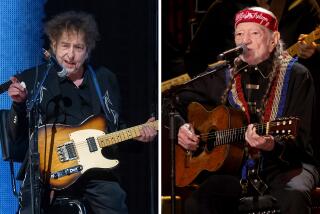Five thoughts on the War on Drugs at the Troubadour on Saturday

Five Thoughts on the War on Drugs at the Troubadour on Saturday.
1. Timing is everything. Were this still an era in which a few properly placed club performances at the right moment could send reverberations across the music world, the War on Drugs’ Adam Granduciel would be zipping on the magic carpet of success right about now.
On Friday and Saturday, the band gigged two sold-out shows at the Troubadour in West Hollywood and rightly toasted the gigs with champagne during Saturday’s encore. Success was in the air. In a less diffuse musical landscape, the band would have arrived at the Troubadour in a figurative Econoline van, only to be whisked away after the shows in a stretch limo with A&R guys plying them with cocaine and hookers as they cruised up Doheny toward a Sunset Marquis suite.
Perhaps a television or two would have been chucked onto the strip below.
PHOTOS: Concerts by The L.A. Times
That isn’t to say the War on Drugs, which makes big, bold rock songs with humming organs and runaway-train momentum, is a throwback. On the contrary, the Saturday set was invigorating because the six players were so planted in the here-and-now. While drawing on a hint of electrified Bob Dylan, sheets of nuanced guitar distortion, a sound formed in part through his work with kindred creator Kurt Vile and a rolling heaviness generated through thick grooves and rhythms, the band offered a near perfect set of future rock.
2. The extended guitar solo is a tricky proposition. Too many of them and you risk being indicted for wankery, especially when only one man, Granduciel, is doing them all.
Somewhat miraculously, his many six-string excursions Saturday were so melodically inventive and transfixing that seldom did they come off as self-indulgent. He fed these solos through pedals and boxes both on the floor and atop a gear case, tapping buttons to tweak the wave forms, sending shimmering psychedelic tones that echoed and bounced while a practiced, tight group of experts moved in lockstep.
The solos seemed essential ingredients of the songs, not add-ons included to prove his mettle. Curled over his instrument like a comma, the guitarist during “Red Eyes” was particularly astounding. The morning after the concert, that solo was still running through my head. When someone in the crowd requested “Touch of Grey,” the late-period Grateful Dead hit, the tip made complete sense.
3. Expansiveness is good. The War on Drugs opened with “Under the Pressure,” the first track on the group’s beguiling new record “Lost in the Dream.” Nearly three years in the making, its 10 tracks range in length from three to almost nine minutes. But Saturday, the band drew “Pressure” even wider, fattening the solos and riding a hypnotic loop to well beyond 10 minutes.
PHOTOS: Iconic rock guitars and their owners
Throughout the two-hour set the band did this. Whether a saxophonist offering counterpoint melodic responses, Granduciel’s guitar-tech sitting in front of a pedal-steel guitar or bassist Dave Hartley offering labyrinthine lines wild enough to get lost within, the War on Drugs was mesmerizing.
4. Patience is a virtue. When last I saw the band in Los Angeles, the War on Drugs was supporting its previous album, “Slave Ambient,” from 2011. The group gigged the Satellite in Silver Lake and performed as a smaller band to a tiny but tight crowd. These two Troubadour shows are the next step in an ascent. In a few years (and in a perfect world), they’ll be selling out venues twice this size, and so on.
(4a. Why the heck wasn’t the War on Drugs booked for Coachella?)
5. Those who don’t know history are doomed to repeat it. As one of its encores, the band performed a medley of two songs: Badfinger’s “Without You,” popularized in 1971 by Harry Nilsson, and John Lennon’s “Mind Games.” Students of the Troubadour will understand the reference: it was here that Lennon and Nilsson were ejected in the early ‘70s after drunkenly heckling the Smothers Brothers.
That the band took the effort to honor the space confirms artists consumed by the spirit of the music, a truth on full display throughout this breakout performance.
(Note: The photograph accompanying this review was taken during Friday’s show at the Troubadour. The above review is of Saturday’s performance.)
ALSO:
Review: Neil Young on the rock pulpit at Dolby Theatre
Emmylou Harris recalls her ‘magical’ album ‘Wrecking Ball’
Stephen Stills aims to Light Up the Blues for Autism Speaks
Follow Randall Roberts on Twitter: @liledit
More to Read
The biggest entertainment stories
Get our big stories about Hollywood, film, television, music, arts, culture and more right in your inbox as soon as they publish.
You may occasionally receive promotional content from the Los Angeles Times.






